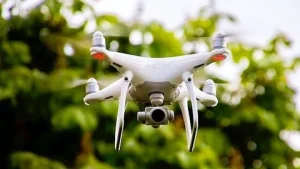The so-called Global Positioning System is known to many and is better known by the abbreviation GPS. This is of course due to the fact that GPS tracking has long been available to everyone on mobile phones and in the form of car navigation devices – for example as a GPS tracker in private cars or in trucks and other commercial vehicles.
In short, a BlackOwl GPS location system consists of three components: GPS satellites, ground stations, and GPS receivers.
GPS satellites
It is a network of 24 precisely distributed satellites that continuously orbit the earth. Each satellite sends out microwave carrier signals that carry information about the position of the satellites and when the signals were sent.
Ground stations
Ground-based radar stations constantly track the position of the GPS satellites in orbit. They provide the data necessary to accurately compare the atomic clock of each satellite with the current earth time.

GPS receiver
GPS receivers evaluate the GPS signal sent by satellites and use trilateration to calculate the exact location. This is a measuring method for determining position. In contrast to triangulation, however, trilateration is not based on the measurement of three angles, but on distance or distance measurements of three points. A 3D trilateration can thus be carried out using the signals from only four satellites. This provides the latitude and longitude as well as the altitude position of a GPS tracking device. Happy for their low power consumption, GPS receivers are small and inexpensive to manufacture. The small size and the low cost also ensure a correspondingly wide application in consumer electronics.
Common uses for GPS tracking
Today, GPS tracking is integrated as standard in many mobile devices such as smart watches, smartphones, wearables, tablets, computers and vehicle tracking devices. In vehicles, GPS devices are mostly used in navigation systems. This applies to both the aforementioned GPS trackers in private and commercial cars and the corresponding GPS trackers for trucks. The respective systems guide the driver on his route and help him to reach the chosen destination. Thanks to telematics in particular, they have become an indispensable element for modern fleet management. Telematics is a key to this. Thanks to this technology, real-time GPS data from vehicle tracking devices can be recorded from the OBD port of a vehicle and together with other vehicle-specific data transmitted to central servers. This is done over the cellular network and in some cases over satellite networks.
In essence, modern GPS fleet tracking software links the location data with a range of additional performance data for the vehicles and devices. This can be used to precisely analyze the day-to-day operations. Based on the knowledge gained, central aspects such as security, energy efficiency or productivity can in turn be increased in a targeted manner.






